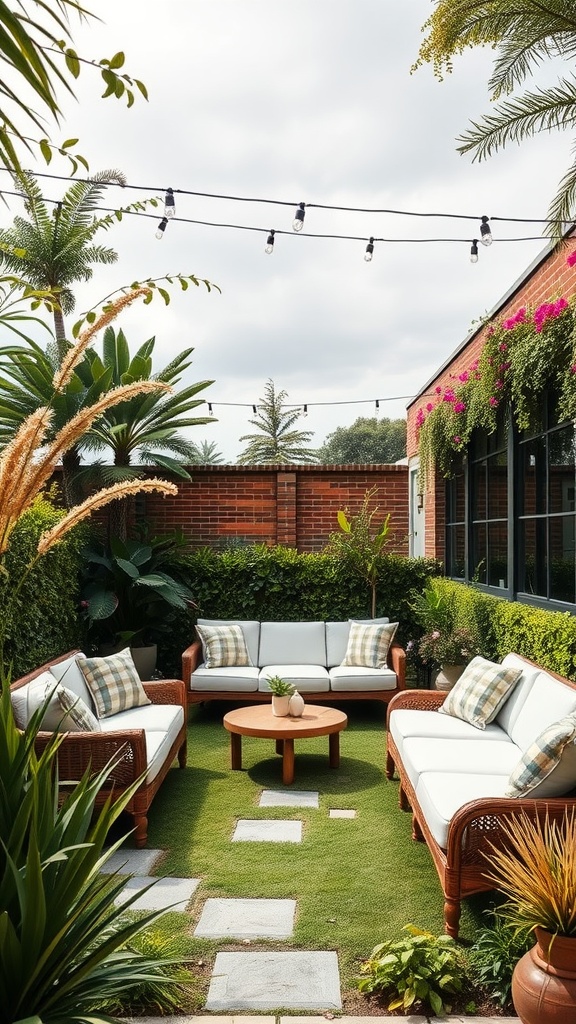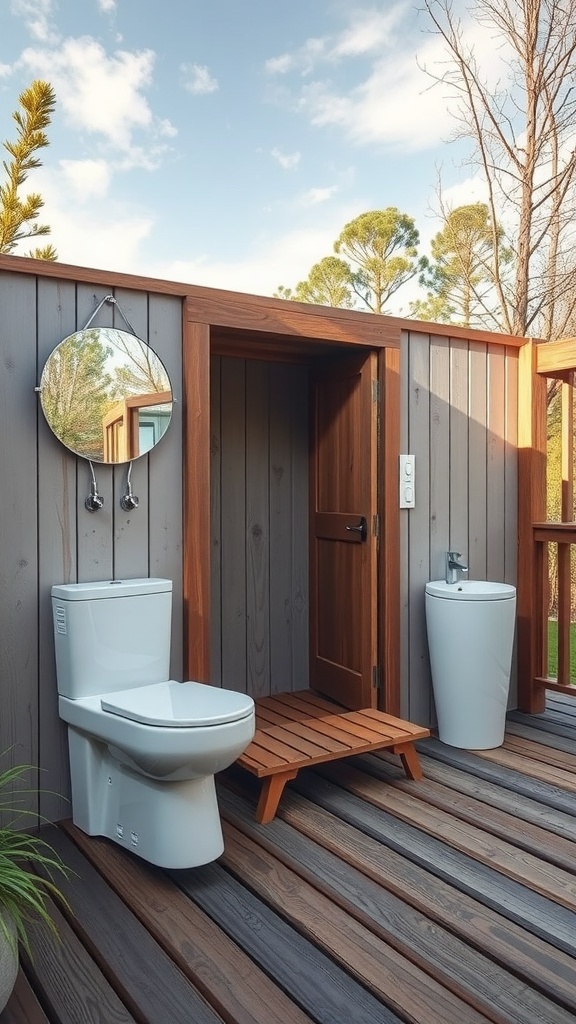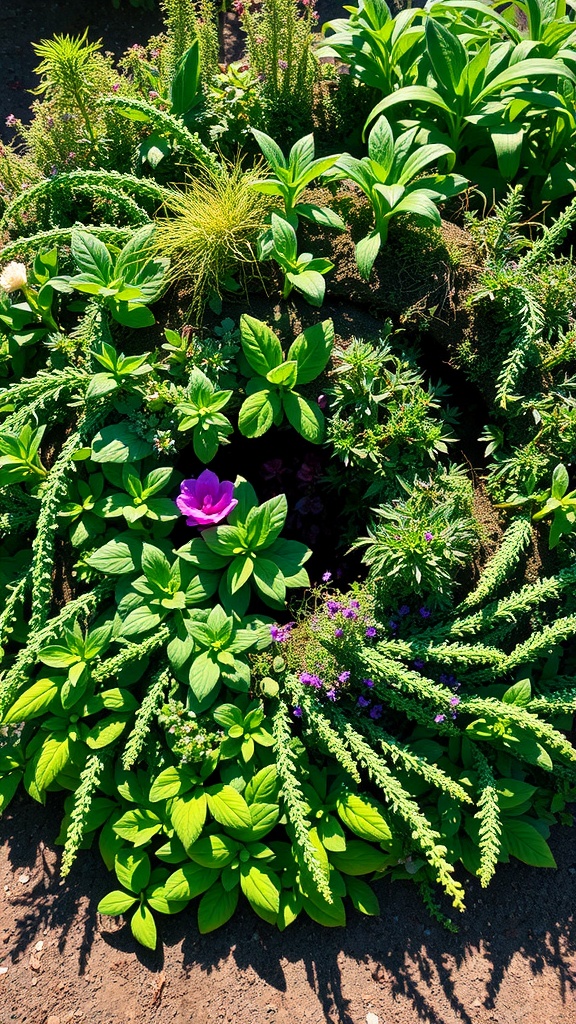When it comes to landscaping, the possibilities are endless! Whether you’re looking to create a peaceful garden retreat, a space to entertain friends, or simply enhance the beauty and functionality of your yard, these 19+ landscaping ideas will inspire you to design your perfect outdoor sanctuary. From lush flower beds to cozy outdoor living areas, we’ll guide you through different landscaping ideas to suit every taste, style, and budget.
Whether you’re starting with a small balcony, a backyard garden, or a sprawling lawn, these ideas can help you build the outdoor space of your dreams.
1. Start with a Beautiful Garden Pathway
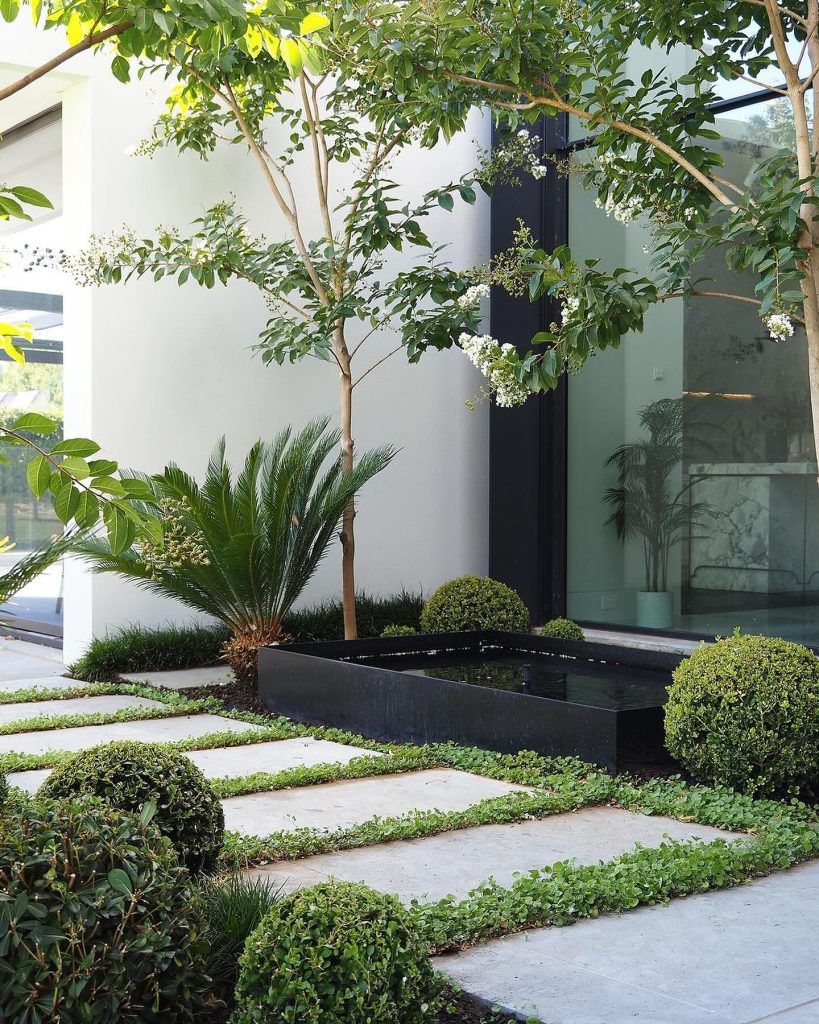
A well-designed garden pathway sets the tone for your entire landscape. Pathways not only provide structure to your garden but also lead visitors through your outdoor space, helping them discover your garden’s hidden gems. Whether it’s a winding gravel path, a straight stone walkway, or a curved wooden boardwalk, a pathway adds a personal touch to your garden, guiding people through an enchanting landscape.
The materials you choose for your pathway can make a big difference in the look and feel of your garden. Natural stone, bricks, or gravel can create a rustic, natural vibe. If you’re looking for something sleek and modern, consider concrete pavers, large flagstones, or even metal edging. This flexibility allows you to tailor the pathway to match your existing outdoor décor and style.
You can enhance your garden pathway with border plants such as lavender, ferns, or creeping thyme, which will soften the edges and provide bursts of color along the way. Lighting can also play an important role, as soft lighting along the path adds charm in the evening and makes the area safer at night. Don’t forget to plant low-maintenance, evergreen plants on the sides of your pathway to ensure it looks beautiful year-round.
2. Embrace the Charm of Flower Beds

Flower beds are the perfect way to bring a splash of color and life to your landscape. Whether you’re planting annuals that bloom seasonally or perennials that come back year after year, flower beds provide a sense of vibrancy and personality to your outdoor space. By incorporating flowers into your landscaping design, you create a welcoming atmosphere while adding fragrance and texture to the environment.
When planning your flower beds, think about the overall design and color scheme you want to achieve. You can opt for a monochromatic theme, such as a sea of purple lavender and violet flowers, or go for a more dynamic, colorful mix of flowers like sunflowers, daisies, and tulips. Choose flowers that will thrive in your local climate and consider their growth habits to ensure they complement each other in height and spread.
One idea for adding interest is to create layered flower beds, with taller plants at the back and shorter ones at the front. Adding ground covers like creeping thyme or moss also fills in the empty spaces, creating a cohesive and full look. Don’t forget about texture—adding plants with different leaf shapes, such as ferns or hostas, will enhance the visual appeal of your garden.
3. Create a Cozy Outdoor Living Room
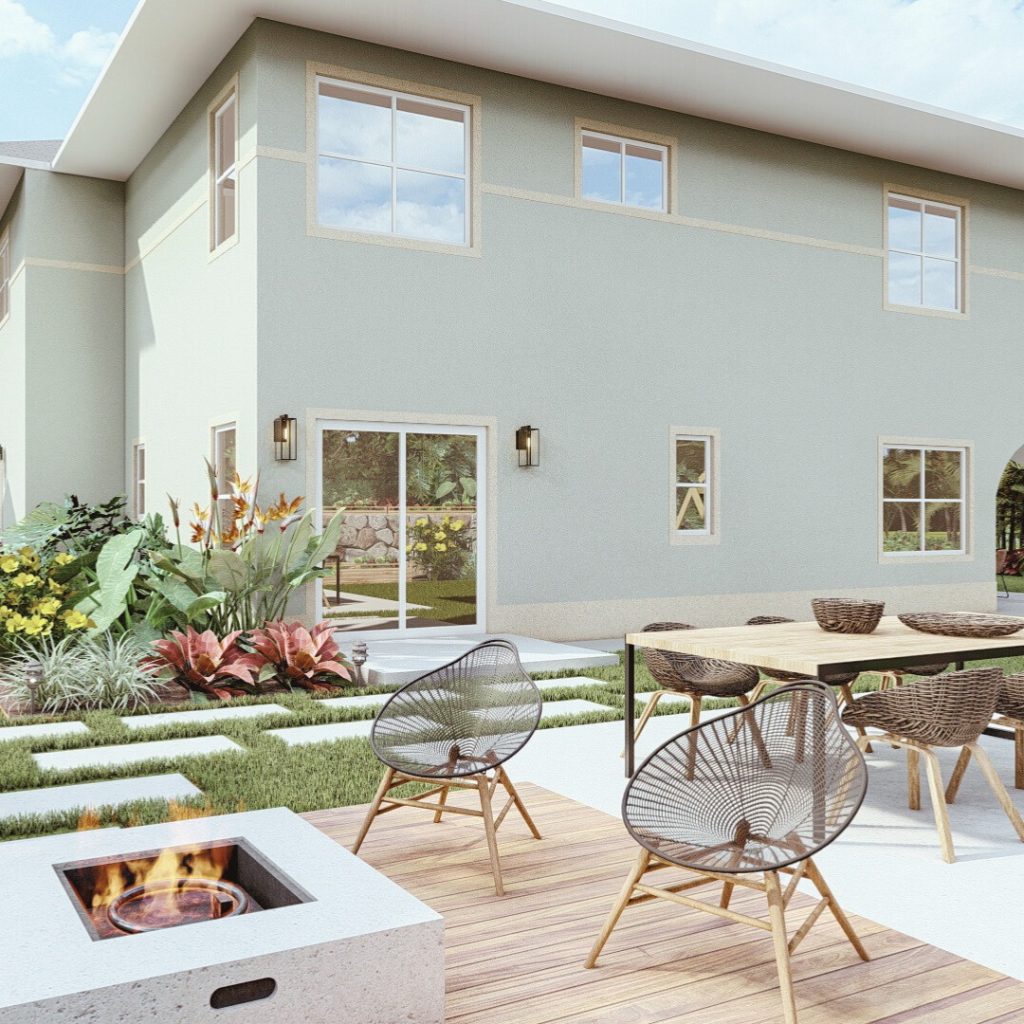
Transform your backyard into an extension of your home by creating a cozy outdoor living room. With the right furniture, accessories, and a touch of style, you can design a space that’s perfect for entertaining guests, lounging with a book, or simply relaxing in the fresh air.
Start with comfortable seating arrangements. Choose modern patio furniture that’s both stylish and durable. Consider sectional sofas, outdoor armchairs, or even a hammock for a more laid-back vibe. Add plush throw pillows and soft blankets for comfort, especially if you plan to use this space during cooler months.
To create a well-defined space, you might want to include an outdoor rug, which will not only add color but also help to ground the seating area. Add in lighting—think string lights, lanterns, or outdoor sconces—to create a warm, inviting ambiance for evening relaxation. For an additional touch of privacy and a chic look, consider a pergola or outdoor curtains to shield your living room from the sun and provide some separation from the rest of your yard.
4. Add a Water Feature for Tranquility
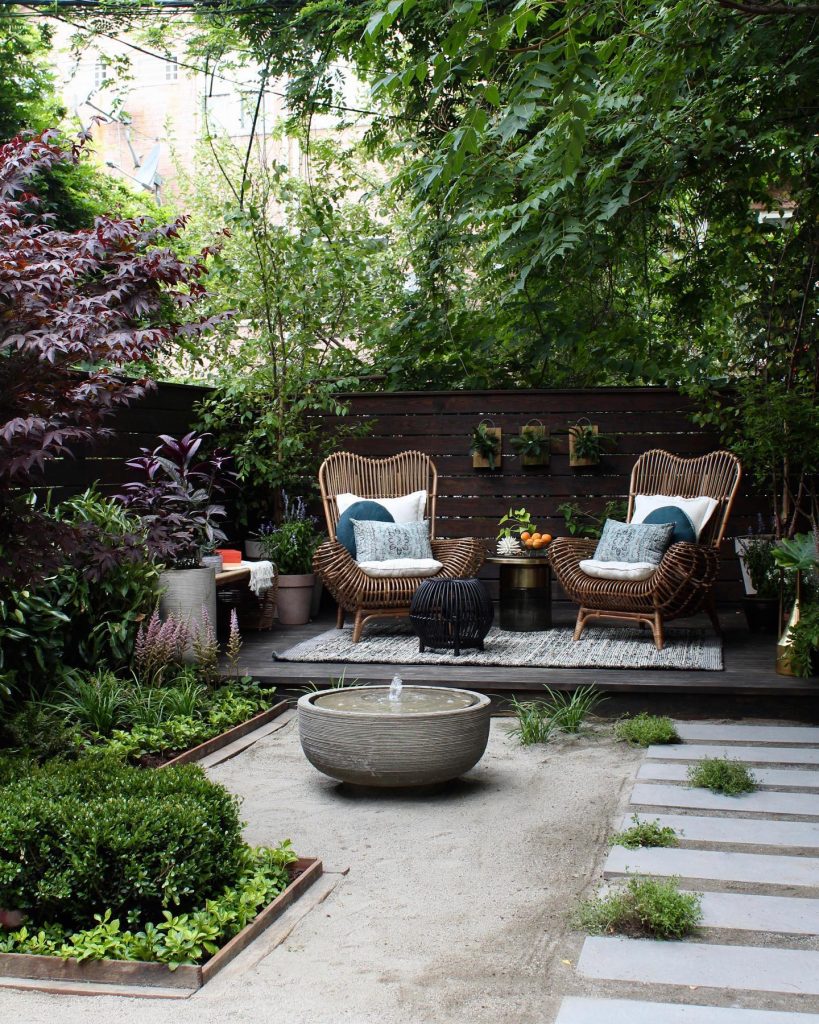
Water features can significantly enhance the tranquility of your outdoor space. The sound of running water has a calming effect, turning your garden into a peaceful retreat. From fountains to ponds to small waterfalls, the variety of water features available today can suit any style or space.
A small, tiered fountain can serve as a focal point in a garden or on a patio, bringing elegance and serenity to the environment. If you have more space to work with, consider adding a koi pond or a waterfall. The natural beauty of flowing water pairs beautifully with plants, and you can add aquatic plants or fish to make the water feature even more stunning.
To make your water feature truly special, surround it with lush greenery and flowers. You could plant water-loving species like hostas or ferns around a pond or add trailing ivy to the edges of a fountain. When planning your water feature, think about the style and size of your yard; smaller yards may benefit from a tabletop fountain, while larger yards can accommodate a more expansive waterfall or pond.
5. Install a Raised Garden Bed
Source
If you love gardening but struggle with poor soil or back pain from bending down, raised garden beds are a perfect solution. These structures elevate your garden to waist height, making it easier to tend to your plants and giving you better control over soil conditions. Raised garden beds are ideal for growing everything from vegetables and herbs to flowers and ornamental plants.
There are many ways to build a raised garden bed, ranging from simple wooden frames to more elaborate stone or brick structures. Choose a material that complements your home’s style and is durable enough to withstand the elements. Wood is a popular option, but metal and concrete also work well.
Raised beds provide excellent drainage and allow you to control the soil quality, which is especially beneficial if your garden has poor or clay-like soil. You can also mix in compost or organic material to enrich the soil. Plus, because the plants are elevated, they are less prone to pests and weeds, making maintenance easier. Raised garden beds can be used for a wide variety of plants, from herbs like basil and thyme to flowers such as marigolds or geraniums.
6. Incorporate Vertical Gardens for Small Spaces
Source
If you have limited space but want to enjoy the beauty of plants and greenery, vertical gardens are a fantastic option. Vertical gardening allows you to grow plants on walls, trellises, or fences, freeing up precious ground space for other uses. This is especially beneficial for small yards, urban spaces, or balconies.
You can use a variety of systems for vertical gardening, such as wall-mounted planters, hanging pots, or wooden trellises. Climbing plants like ivy, morning glories, or wisteria work particularly well for this type of design. These plants can be trained to grow up vertical structures, adding height and visual interest to your garden.
Consider using a mix of flowers, herbs, or even vegetables in your vertical garden. Not only will this save space, but it will also create a lush, green backdrop for your outdoor area. Vertical gardening can also add privacy to your patio or balcony, making your space feel more secluded and intimate.
7. Design a Zen Garden for Peaceful Meditation
Source
A Zen garden is an ideal choice if you’re looking to create a calm, meditative space in your outdoor area. Characterized by simple, minimalist elements, Zen gardens are designed to promote mindfulness and relaxation. They’re perfect for anyone seeking to escape the hustle and bustle of daily life and enjoy a peaceful moment of tranquility.
To design a Zen garden, start with a flat, gravel-covered surface. The gravel represents water, and you can use a rake to create patterns that resemble flowing water or waves. Add stones, boulders, and other natural materials to represent mountains or islands, and place them strategically to create balance and harmony. Sparse plants like bamboo, moss, or bonsai trees add an element of life without overwhelming the space.
Consider adding a small fountain or a pond to introduce the soothing sound of water, and keep the colors muted and neutral. Your Zen garden should be a place where you can sit, reflect, and find peace, making it the perfect retreat in any outdoor setting.
8. Create a Focal Point with a Fire Pit
Source
A fire pit is a fantastic way to bring warmth, ambiance, and a focal point to your outdoor space. Whether you’re gathering with friends and family or enjoying a quiet evening under the stars, a fire pit offers both functionality and aesthetic appeal. It’s also an excellent addition to any backyard patio or garden.
There are many types of fire pits available, from sleek, modern designs to rustic, stone-built ones. Choose one that complements your landscaping style and fits the size of your outdoor space. For a modern twist, consider a gas fire pit that’s easy to light and control. Alternatively, if you prefer the classic charm of a wood-burning fire, choose a fire pit made from stone, brick, or metal.
Around your fire pit, arrange seating for your guests. Comfortable outdoor chairs or a built-in bench will allow everyone to enjoy the warmth and the crackling fire. Add some cozy throws or pillows to create an inviting atmosphere, and your fire pit area will quickly become the most popular gathering spot in your yard.
9. Grow a Herb Garden for Fresh Ingredients
Source
Imagine stepping into your backyard and picking fresh basil, mint, or rosemary to use in your cooking. A herb garden can provide you with fresh, flavorful ingredients right at your doorstep. Not only is it convenient, but it’s also a great way to add fragrance and beauty to your outdoor space.
Herb gardens don’t require a lot of space, so they’re perfect for small yards, patios, or balconies. You can create a raised bed, plant herbs in pots, or even repurpose an old wooden crate or pallet to house your herbs. Popular herbs to plant include basil, thyme, oregano, rosemary, and parsley, but you can experiment with any herbs that grow well in your region.
Herb gardens are also low-maintenance, making them ideal for beginners. Most herbs thrive in well-drained soil and require only occasional watering. Plus, they attract beneficial pollinators like bees and butterflies, which can improve the health of your garden as a whole.
10. Add a Lush Lawn for a Classic Look
Source
A lush, green lawn is a classic feature of many outdoor spaces, offering a beautiful backdrop for your landscaping elements. A well-maintained lawn provides a soft, clean area for outdoor activities, like playing with kids or hosting a garden party. It also serves as a neutral canvas for other landscaping features like flower beds, water features, and outdoor furniture.
To create a healthy lawn, start by choosing the right grass variety for your region’s climate. Whether you live in a cooler or warmer climate will influence the type of grass that will thrive in your yard. Regular mowing, watering, and fertilizing will keep your lawn looking pristine.
If you’re looking for a low-maintenance option, consider drought-tolerant grasses that require less water, or opt for an artificial lawn if you don’t want to worry about upkeep. A well-maintained lawn adds curb appeal, and its vibrant green color contrasts beautifully with surrounding plants and flowers.
11. Mix in Some Edible Landscaping
Source
Edible landscaping is the perfect way to blend beauty with practicality. Instead of purely ornamental plants, you can grow fruits, vegetables, and herbs right in your garden. This approach allows you to harvest fresh produce while also enjoying the aesthetic value of your landscape.
Imagine growing a patch of tomatoes beside vibrant flowers or planting blueberries under a tree, where they provide both shade and food. Edible landscaping offers a unique, sustainable way to beautify your garden and provide your family with fresh ingredients.
Start by incorporating fruit trees like apples, peaches, or citrus along the borders of your yard. Consider planting berry bushes such as raspberries, strawberries, and blackberries in raised beds or along fences. Herb gardens tucked into corners or raised garden beds offer easy access to culinary favorites like basil, mint, or thyme.
The best part about edible landscaping is its versatility. You can mix in flowering plants alongside vegetables, creating a vibrant, functional garden that provides beauty and bounty throughout the year. Not only will this make your space more sustainable, but it will also teach your family about the joy of growing their own food.
12. Install a Pergola for Elegant Shade
Source
A pergola is an elegant addition to any outdoor space, offering both shade and style. Whether you want to create a cozy dining nook or simply a sheltered area to relax, a pergola is the perfect structure to elevate your backyard’s design.
Pergolas are available in a variety of materials, including wood, metal, and vinyl. Choose the one that best fits the style of your home and garden. A wooden pergola brings a natural, rustic charm, while a metal or vinyl one offers a modern, sleek appearance.
A pergola can be adorned with climbing plants such as wisteria, ivy, or grapevines, which add greenery and create a more private, shaded space. The use of a pergola can also define an outdoor living area, such as an outdoor kitchen or dining space, and make it feel like an extension of your home.
Incorporating string lights or hanging lanterns beneath the pergola creates an enchanting ambiance in the evening, making it the ideal spot for entertaining guests or enjoying a quiet moment.
13. Create a Playful Space with a Treehouse
Source
For families with young children or for anyone who enjoys a bit of childhood nostalgia, a treehouse is an amazing addition to your landscaping. A treehouse can be a whimsical retreat that’s both fun and functional. It can serve as a reading nook, a place for children to play, or even a relaxing hideaway for adults.
When designing a treehouse, safety should be a top priority. Make sure the tree is sturdy and healthy, with thick branches that can support the weight of the structure. Consider hiring a professional if you’re unsure about building it yourself.
Treehouses come in a variety of styles, from simple platforms to elaborate multi-story creations with balconies and windows. You can decorate it with cushions, fairy lights, or even a little outdoor rug to make it feel like a home in the treetops.
Treehouses are ideal for adding an element of surprise and adventure to your landscape, and they also provide a private space away from the main outdoor living areas. Whether it’s a sanctuary for reading or a playhouse for kids, it adds charm and creativity to your yard.
14. Use Decorative Gravel for Low-Maintenance Areas
Source
If you’re looking for a low-maintenance landscaping solution, decorative gravel is an excellent option. Gravel is versatile, easy to install, and requires minimal upkeep, making it ideal for pathways, garden beds, or even entire sections of your yard.
Decorative gravel comes in a variety of colors, sizes, and textures, allowing you to choose the perfect option to complement your garden design. You can create a modern minimalist look with sleek black or white gravel, or opt for earthy tones for a more rustic vibe.
Gravel is a great choice for areas where grass struggles to grow, such as on slopes or in shady spots. It provides excellent drainage and can be used to create clean lines between different sections of your garden, such as separating a flower bed from a vegetable patch.
You can also add larger rocks, stepping stones, or pavers to enhance the aesthetic of gravel paths. It’s an easy way to create functional and attractive landscaping without the need for constant care or water.
15. Transform Your Yard with Lighting
Source
Outdoor lighting is one of the most impactful features you can add to your landscaping. It not only enhances the beauty of your outdoor space after dark but also provides safety and security. Well-placed lights can highlight trees, pathways, or architectural features, creating a warm and welcoming atmosphere.
There are various types of outdoor lighting options to consider, including string lights, lanterns, and solar-powered garden lights. String lights are a popular choice for draping over pergolas, fences, or tree branches, creating a soft, romantic glow. Solar lights are an eco-friendly option that charges during the day and automatically turns on at night, illuminating walkways, garden beds, or decorative elements.
For a more dramatic effect, consider installing spotlights or uplights to highlight trees, sculptures, or fountains. Layering different types of lighting—ambient, task, and accent lighting—creates depth and adds visual interest to your outdoor areas.
A well-lit garden is also safer for evening use, helping to prevent tripping or accidents. With the right lighting, your outdoor space can become a magical destination long after the sun sets.
16. Use Potted Plants for Flexibility
Source
Potted plants are a fantastic way to add instant greenery to your outdoor space, especially if you don’t have the time or resources for large garden beds. They allow you to introduce pops of color and texture wherever you want, whether it’s a sunny patio, a balcony, or a front porch.
The beauty of potted plants lies in their flexibility. You can easily move them around to change up the look of your garden or match the seasons. You can use large pots for dramatic statements, or small containers for more delicate flowers and herbs. With the variety of containers available—such as terracotta, ceramic, or modern concrete pots—you can create a stylish and personalized look for your garden.
Potted plants are also a great way to experiment with different plant species without committing to a full garden bed. You can combine plants with different colors, textures, and growth habits to create eye-catching arrangements. For example, place tall, dramatic plants like pampas grass or ornamental grasses in large pots and add trailing vines or cascading flowers like petunias or ivy to soften the arrangement.
17. Incorporate Succulents for a Modern Touch
Source
Succulents are one of the most stylish and low-maintenance landscaping options available. Their unique shapes, vibrant colors, and hardy nature make them a great choice for modern, minimalist gardens. Succulents thrive in dry, well-drained soil, making them perfect for regions with little rainfall.
Consider incorporating a variety of succulents into your garden design, whether you use them in containers, raised beds, or as ground cover. Popular succulents like aloe, echeveria, and agave come in various sizes and colors, adding both texture and contrast to your landscape.
Succulent gardens can be arranged in a geometric or natural pattern, and you can pair them with rocks or decorative gravel for a clean, contemporary look. For added visual interest, use colored pots, planters, or even reclaimed materials to hold your succulents.
If you have a small space, succulents are a fantastic option. You can use them on balconies, terraces, or even create vertical succulent gardens on a wall. Their resilience and beauty make them a popular choice for a modern touch in any landscape.
18. Create a Privacy Hedge for Seclusion
Source
A privacy hedge is an excellent way to create a secluded, intimate outdoor space. Whether you want to shield your garden from neighbors or create a quiet retreat for yourself, a well-placed hedge can provide both privacy and visual appeal.
Choose evergreen shrubs or trees like arborvitae, boxwood, or privet for a year-round screen. These plants grow densely, offering both privacy and beauty. Depending on the size of your yard, you may choose to plant a single row of hedges or a more elaborate layout of multiple layers for added texture and interest.
Hedges can also provide a barrier from noise, making them ideal for busy areas or urban environments. You can plant them along the perimeter of your yard or use them to create smaller garden rooms within your landscape. Add in flowering plants or climbing vines along the hedge for a more dynamic look.
19. Add a Deck for an Elevated Experience
Source
A deck is an excellent way to take advantage of sloped terrain or create an elevated outdoor living area that’s separate from the rest of your landscape. Decks can be used for dining, lounging, or hosting gatherings, and they offer an additional level of design to your yard.
Made from wood, composite, or even metal materials, decks can be customized to suit your home’s architecture and your personal style. If you want a more natural look, a wooden deck with rustic railings can blend seamlessly into a garden setting. For a more modern feel, sleek metal or composite decks with glass railings offer a clean, contemporary aesthetic.
A deck provides an ideal space for outdoor furniture, such as a dining table, lounge chairs, or even a hot tub. Consider adding built-in planters, lighting, or a retractable awning to make the space more functional and inviting. Decks also offer a great opportunity to design an elevated view of your landscape, so you can enjoy the beauty of your garden from above.
Conclusion
Landscaping is more than just a way to beautify your outdoor space; it’s an opportunity to express your personality and create an environment where you can relax, entertain, and enjoy nature. From practical raised garden beds and herb gardens to luxurious fire pits and pergolas, there’s no shortage of ideas to elevate your outdoor living space.
By incorporating any or all of these 19+ landscaping ideas, you can transform your yard into a peaceful retreat, an entertainer’s paradise, or a family-friendly haven. Remember, your outdoor space is a reflection of you, and the possibilities are endless. Whether you prefer a classic, traditional look or a more modern, minimalist approach, there’s a design for every taste, lifestyle, and budget.
Start by choosing a few ideas that resonate with you, and gradually build your dream outdoor oasis, one idea at a time. Happy landscaping!
